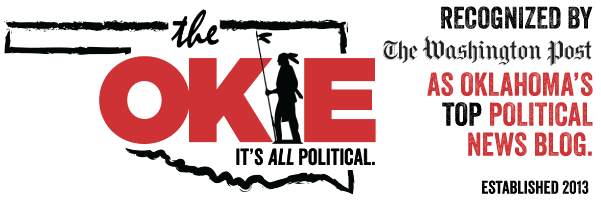Oklahoman: Tax Increases Can Slow Oklahoma’s Economic Growth
Tax increases can slow Oklahoma’s economic growth
by The Oklahoman Editorial Board
ENERGY production is a foundational element of Oklahoma’s economy, but there are signs some state lawmakers are taking it for granted. That’s a mistake, because if lawmakers raise taxes on oil and gas production and cause curtailment of drilling, they could quickly turn the current state recovery back into a recession.
Oklahoma levies a gross production tax rate of 2 percent for 36 months on new wells and 7 percent thereafter. Previously, the rate was 1 percent for four years for horizontally drilled wells.
Facing an $878 million shortfall, lawmakers are considering numerous tax increases. Many call for raising the gross production tax, insisting a higher cost of business won’t affect drillers’ business decisions. Democrats have made that argument the loudest, but some Republicans have joined them, including House Appropriations and Budget Chairwoman Leslie Osborn.
The call to raise energy taxes runs counter to other efforts. The Legislature has already passed a bill extending aerospace tax breaks for another eight years, including a $5,000 tax credit given to substantially reduce or even eliminate aerospace engineers’ income tax payments. This was done because officials concluded Oklahoma’s income tax rate would otherwise lead aerospace companies to avoid the state.
Yet energy producers pay the gross production tax and income tax. If income taxes alone can drive aerospace jobs out of Oklahoma, why would oil and gas drilling be any different when facing a greater burden?
There’s evidence Oklahoma’s lower tax rate has led to more drilling than in states with higher rates. From 2014 to 2016, as oil prices plummeted, drilling in Oklahoma declined 59 percent. That sounds bad until you realize drilling fell 66 percent in Texas, 68 percent in New Mexico, 74 percent in Colorado and 78 percent in North Dakota.
The Oklahoma Oil and Gas Association notes that as of April 6, 2017, Oklahoma had 121 horizontal rigs running, roughly double the April 2016 level. North Dakota’s rig count increased only 13 rigs to a total of 43.
Rep. Jadine Nollan, R-Sand Springs, who endorses raising income taxes and the gross production tax, argues that drilling in Wyoming and North Dakota “is expected to increase by 30 percent this year alone” despite higher energy taxes. But if the increase in Oklahoma drilling slows from doubling to just 30 percent, the state will forgo millions in tax collections.
The “Save Our State” coalition seeks a 7 percent gross production tax, saying it will generate $313 million next year. Yet a recent report from State Treasurer Ken Miller notes an Oklahoma Tax Commission study estimated a 7 percent rate would have generated “almost $100 million” more through February, which translates into about $150 million more annually. That’s less than half what tax increase backers are claiming.
And Miller noted, “The analysis assumes production volumes would have remained unchanged under the different tax rate. Principles of supply and demand suggest production would decline due to a higher tax rate’s impact on profit margins.”
A decline in drilling would also lower associated income and sales tax collections, further harming state finances.
The recent increase in drilling activity has provided welcome spark to Oklahoma’s economy. State lawmakers should do nothing to snuff it out.

